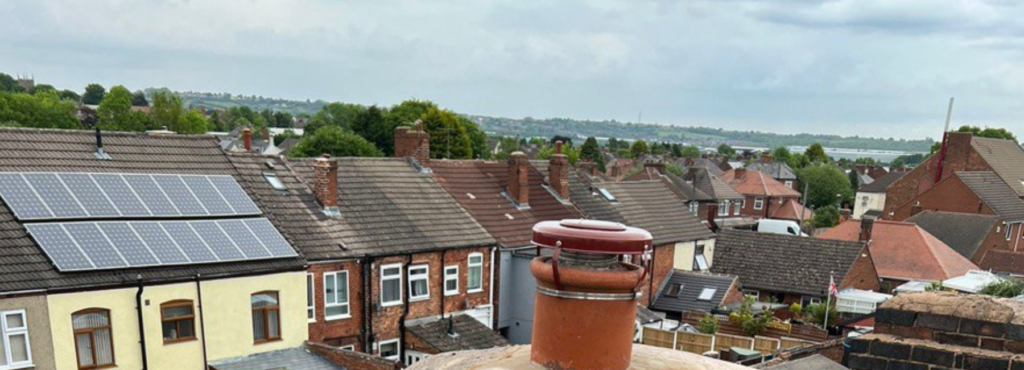Introduction: Many homeowners and businesses are turning to solar panels as a viable solution in pursuing sustainability and energy efficiency. Incorporating solar panels on a flat roof can offer numerous benefits, including reduced energy bills and a smaller carbon footprint. At Ripley Roofing Repairs, we understand the importance of a well-planned solar panel installation that ensures efficiency and longevity. This blog post will guide you through integrating solar panels into your flat roof system, highlighting key considerations and steps for a successful installation.
1. Assessing Your Roof’s Suitability
Before installing solar panels, evaluating whether your flat roof is suitable for such an installation is crucial. Key factors to consider include:
- Structural Integrity: Ensure that your roof can support the additional weight of the solar panels and mounting system. A structural assessment by a qualified professional can help determine if any reinforcements are needed.
- Orientation and Pitch: Flat roofs don’t have the optimal angle for solar panels, so mounting systems can be adjusted to achieve the ideal tilt for maximum sun exposure.
- Roof Condition: The roof should be in good condition before installation. Address any existing issues, such as leaks or damage, to prevent future complications.
Tip: Before installing solar panels, consult with a roofing expert to assess your roof’s suitability and discuss potential reinforcements or repairs needed.
2. Choosing the Right Solar Panel System
Selecting the appropriate solar panel system is essential for achieving optimal performance. Consider the following options:
- Fixed Mounts: These systems hold the solar panels at a fixed angle, which can be adjusted to optimise sunlight capture. They are a cost-effective solution for flat roofs but may provide a different efficiency level than adjustable mounts.
- Adjustable Mounts: These systems allow for the angle of the panels to be adjusted seasonally or as needed to capture the maximum amount of sunlight. They can offer higher energy production but are generally more expensive.
- Ballasted Systems: Designed for flat roofs, ballasted systems use weighted blocks to hold the panels in place without penetrating the roof surface. This method is ideal for roofs where penetration could lead to leaks.
Tip: Work with a professional to determine the best mounting system for your roof based on its characteristics and energy needs.
3. Ensuring Proper Installation
Proper installation is critical to maximise the efficiency of your solar panel system and avoid potential damage to your flat roof. Key steps include:
- Mounting System Installation: The mounting system should be securely fixed and evenly distributed across the roof. Ensure that the installation doesn’t compromise the roof’s integrity.
- Panel Placement: Panels should be positioned to avoid shading from roof structures, HVAC units, or other obstacles. Ensure that the panels are aligned to capture maximum sunlight throughout the day.
- Wiring and Electrical Connections: Proper wiring and connections are essential for the system’s efficiency and safety. Ensure that a certified electrician completes all electrical work to comply with safety standards and regulations.
Tip: Inspect the mounting system and panel connections to ensure they remain secure and functional.
4. Maintenance and Monitoring
Maintaining your solar panel system is key to ensuring its long-term efficiency. Regular maintenance tasks include:
- Cleaning: Keep the panels clean and free from debris to maintain optimal performance. Use a soft brush or cloth to avoid scratching the surface.
- Inspection: Regularly inspect the panels and mounting system for any signs of damage or wear. Address any issues promptly to prevent potential problems.
- Monitoring: Many solar panel systems use monitoring tools to track energy production and system performance. Use these tools to identify any potential issues and optimise energy output.
Tip: Schedule professional inspections and maintenance to ensure that your solar panel system remains in top condition and continues to perform efficiently.
5. Understanding Financial Incentives
Incorporating solar panels on your flat roof can provide financial benefits through various incentives, including:
- Government Grants and Subsidies: Check for available grants, subsidies, or tax incentives that can help offset the cost of installation.
- Feed-in Tariffs: Explore opportunities to earn money by selling surplus energy from your solar panel system to the grid.
Tip: Research available financial incentives and consult with a solar energy expert to understand how they can benefit your situation.
Conclusion: Integrating solar panels on a flat roof is a sustainable and efficient way to harness solar energy for your home or business. By assessing your roof’s suitability, selecting the right system, ensuring proper installation, and maintaining the system, you can enjoy the benefits of reduced energy bills and a smaller environmental footprint.
Call us on: 01773 300 896
Click here to find out more about Ripley Roofing Repairs
Click here to complete our contact form and see how we can help you with your roofing needs.

